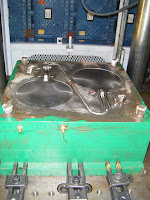MommyPerks.com Rocks! I love building relationships with new customers!
May/10/2010

2 packs, 12 packs, 24 packs. Check the site for rates.
*Please note: Mommy Perks is not in the habit of posting business press releases on our blog. However, the owner of KleenSlate Concepts recently made a large contribution to our first Twitter Party. We, in turn, are happy to promote the Central California Small Business Person of the Year press release, in her honor!
Release Date: May 7, 2010
(559) 487-5791, ext 143
Contact: Melende Ward
KleenSlate Concepts Selected as the Central California 2010 Small Business Person of the Year
National Small Business Week: May 23-29, 2010
SONORA, CA – The U.S. Small Business Administration’s (SBA) Fresno District Office announced today that Julia Rhodes owner of KleenSlate Concepts has been selected as the 2010 Central California Small Business Person of the Year.
The award presentation for KleenSlate Concepts will be held on May 24, 2010, 12:00 noon at the Sonora Board of Supervisors Chamber located at 2 S. Green Street, 4th Floor in Sonora. For information regarding the award presentation, please contact Melende Ward at (559) 487-5791.
This year marks the 47th annual proclamation by the President calling for the celebration of National Small Business Week. The award recognizes a business owner who exemplifies the entrepreneurial spirit and honors his or her individual contributions to the community. KleenSlate Concepts was selected after a competition held among businesses located within the 15 Central California counties served by the Fresno SBA. The Alliance Small Business Development Center of Modesto nominated the business for the award.
“The Small Business Administration is very proud of the tremendous growth and success that KleenSlate Concepts has achieved. This company serves as a role model for other small business entrepreneurs,” said Carlos G. Mendoza, District Director for the Fresno SBA Office.
Upon notification that she was selected for the award Rhodes said, “I am honored to be selected and I wouldn’t be here today without the help of family, friends and loyal customers. It helps having great products, however, at the end of the day it is the team you have in place that makes or breaks you.”
KleenSlate Concepts was founded in 2001 by Julia Rhodes. At that time her product was little more than a well developed idea for a solution to a common problem – “the missing white board eraser.”
As a previous elementary school teacher, Julia was very familiar with wasting time hunting for erasers for dry erase boards. She did her research and found that no one was manufacturing an eraser that would cap directly to the end of a dry erase marker. With the help of the Alliance Small Business Development Center, Julia started working on her business plan and attended many training and counseling sessions.
Since the development of the dry erase cap KleenSlate has developed many other products including the Dry-Erase Paddles which can be used in classroom settings and team activities. Every paddle is complete with a marker and eraser. The paddle marketing theme “Put the Paddle Back in the Classroom” allows every student in the classroom a hand-held dry erase paddle. The paddles allow an entire classroom to answer a question instead of an individual student. Knowing how financially strapped the schools are, but seeing the measurable difference the paddles are making in the schools performance, Julia is enlisting local businesses to help support local schools.
In 2002, the United States Patent and Trademark Office issued Julia her first patent and trademark and Julia currently holds international patents in China and Japan with other patents pending in multiple countries around the world. She also mentors new inventors on the challenges of the inventor’s journey and is in the process of writing a book to share her knowledge.
KleenSlate Concepts has rapidly evolved into an international product development company providing simple yet effective communication tools for businesses, classrooms, hospitals, homes and travel. The firm currently exports products to the countries of UK, Germany, Spain, Australia, Canada, Peru, Denmark, Switzerland, France, Japan, Israel, China, New Zealand and Ireland and donates products to deaf schools in Africa and Ethiopia.
The popularity and success of KleenSlate products has big retailers such as Office Depot featuring the products in their stores, web sites and catalogs. The business has four employees in its Sonora office and dozens of independent sales reps around the world.
Kurt Clark, Center Director of the Alliance Small Business Development Center said, ““When Julia approached the Alliance SBDC for assistance in 2002, she had already cashed out her teachers pension and had refinanced her house. Like many entrepreneurs, Julia committed all of her personal financial resources to her dream, but also engaged family and friends to provide the seed capital necessary to develop her first product. Assistance from the SBDC enabled her to develop a Business Plan and helped her secure a loan from the local County Revolving Loan Fund (RLF).”
“Julia’s path in business is one that many entrepreneurs experience including the need to stay educated on the ever-changing challenges of business ownership. I am proud to have worked with Julia through these past eight years and see the tremendous success she has had and how she has inspired others to live their own dream,” said Center Director Clark.
Small Business Person of the Year nominations are judged on seven basic criteria: staying power, growth in number of employees, increase in sales and/or unit volume, current and past financial reports, innovativeness of product or service, response to adversity and evidence of contributions to community-oriented projects.

conference and totally satisfied that I did a good job of promoting my product in such an awesome setting.



















